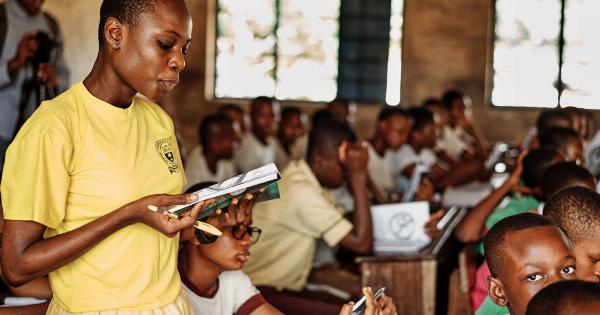Viruses are diverse and fascinating entities that have the ability to infect various organisms, including humans, animals, and even plants.
They take advantage of their hosts’ cellular machinery to replicate and spread, often causing a wide array of diseases and health issues. While most viruses reproduce through a process known as asexual replication, there is a less common and lesser-known method called sexual reproduction. This article explores the deadly consequences that can arise from virus sexual reproduction.
What is Virus Sexual Reproduction?
Sexual reproduction in viruses is a rare phenomenon that occurs when two different strains of the same virus infect the same host cell.
Unlike asexual replication, which involves the replication of the genetic material within a single virus, sexual reproduction relies on the exchange of genetic material between two distinct viruses. This exchange usually occurs through a process called reassortment, recombination, or superinfection.
The Mechanisms of Virus Sexual Reproduction
There are several mechanisms through which viruses can engage in sexual reproduction:.
1. Reassortment
In viruses with segmented genomes, such as the influenza virus, reassortment can occur.
When an individual is infected with two different strains of the influenza virus, the genetic material from each strain can be mixed and packaged into new viral particles. This reassortment leads to the creation of novel viruses with a combination of genetic material from both parental strains.
2. Recombination
Recombination occurs when two different strains of a non-segmented viral genome infect the same host cell. During this process, the genetic material of both strains can exchange segments, resulting in the formation of novel recombinant viruses.
This mechanism is particularly common among RNA viruses, such as retroviruses, that possess reverse transcriptase enzymes capable of integrating genetic material from different sources.
3. Superinfection
Superinfection happens when a host cell is simultaneously infected with two different strains of the same virus. The genetic material from both strains can undergo recombination or reassortment, leading to the formation of new viral progeny.
Superinfection often results in the emergence of genetically distinct viruses with potentially altered pathogenicity or transmissibility.
The Consequences of Virus Sexual Reproduction
Virus sexual reproduction can have severe consequences in terms of disease severity, transmission dynamics, and treatment strategies. Here are some notable consequences:.
1. Emergence of Novel Strains
Virus sexual reproduction often results in the emergence of novel strains that possess different genetic characteristics from their parental viruses.
This genetic recombination or reassortment can lead to the creation of viruses with altered pathogenicity, transmissibility, or drug resistance. This phenomenon is particularly concerning in the case of influenza viruses, as it has the potential to give rise to new strains that can cause pandemics.
2. Increased Virulence
Sexual reproduction can sometimes lead to the creation of viruses with increased virulence.
The combination of genetic material from different strains may result in enhanced pathogenicity, as the new viruses inherit advantageous traits from both parental viruses. This increased virulence can elevate the severity of diseases caused by sexually reproducing viruses and pose a greater threat to public health.
3. Altered Drug Susceptibility
When viruses engage in sexual reproduction, there is a risk of creating progeny with altered drug susceptibility. This is particularly relevant in the case of antiviral drugs or vaccines that target specific viral strains.
If the reassortment or recombination event alters the targeted region of the virus, the effectiveness of these treatment options may be compromised. This poses a significant challenge for developing effective antiviral strategies.
4. Increased Transmission Potential
Viruses that undergo sexual reproduction can sometimes acquire traits that enhance their transmission potential.
For example, reassortment events in influenza viruses can result in strains that possess novel combinations of surface proteins, making them more capable of infecting and spreading among different hosts. This increased transmission potential can contribute to the rapid dissemination of sexually reproducing viruses within populations.
5. Challenges in Vaccine Development
The ability of sexually reproducing viruses to generate novel strains poses challenges for vaccine development.
Vaccines are typically designed to target specific viral strains, but the emergence of new strains through sexual reproduction can render existing vaccines less effective. This necessitates continuous surveillance and vaccine updates to combat the ever-evolving nature of sexually reproducing viruses.
Conclusion
Virus sexual reproduction, although rare, can have significant consequences in terms of disease severity, transmission dynamics, and treatment strategies.
The creation of novel strains, increased virulence, altered drug susceptibility, enhanced transmission potential, and challenges in vaccine development are among the detrimental effects of virus sexual reproduction. Understanding the mechanisms and consequences of this phenomenon is crucial for devising effective strategies to combat the evolving nature of sexually reproducing viruses.




























